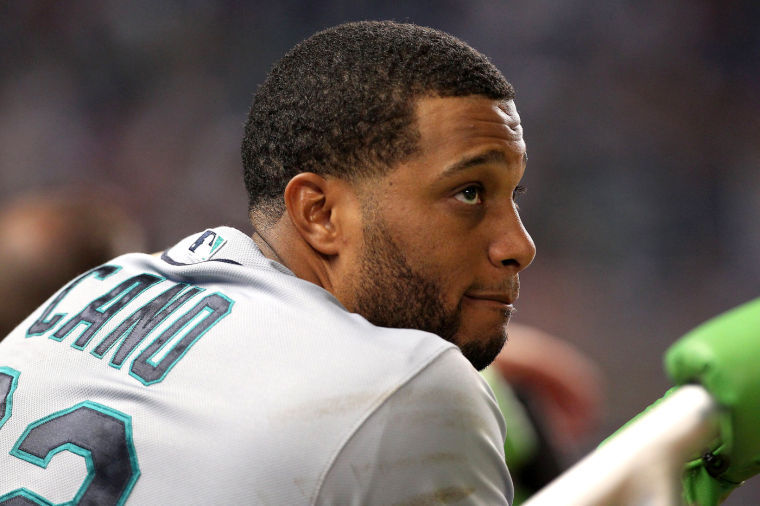Cano is not worth the cost
The Seattle Mariners’ Robinson Cano in the ninth inning against the Miami Marlins at Marlins Park in Miami, April 19, 2014.
June 4, 2014
When the Seattle Mariners signed Robinson Cano to a 10-year, $240 million contract to be their new second baseman, they thought they would get the sweet-swinging home run hitter from New York.
Instead, Cano’s performance has been entirely different this season from the one he gave during his nine years with the Yankees. Entering Wednesday, Cano has launched only two balls over the fence, which puts him on pace for fewer than 10 home runs in 2014. This has never happened in Cano’s career, which raises the question of what it is that the Mariners paid for with a substantial chunk of their payroll.
However, the offensive production has not been completely absent for Cano. He has contributed to the team as more of a contact hitter than a power hitter so far. The Mariners have also played decently this season, keeping their record near the .500 mark.
Yet one has to wonder where the Mariners would be if they had invested in a hitter who could make contact just as often as Cano. That hitter would have been substantially cheaper and, even worse, could have been groomed from within the organization.
Even though Cano has hit above .300 this season, an admirable mark for most hitters, he has averaged that statistic during his entire career. In addition, making contact with major-league pitching is an impressive feat, but players who can hit for power are at much more of a premium than those who hit for contact. If this wasn’t the case, a majority of the hitters in the lineup would hit home runs, which simply does not happen.
It was a long shot to assume that Cano’s power numbers from New York would carry over to Seattle. Safeco Field is traditionally a pitcher’s ballpark, while Yankee Stadium’s right field fence is extremely inviting to left-handed hitters like Cano.
In fact, during Cano’s time with the Yankees, he hit 110 of his home runs with the team while at home. The other 94 were away from Yankee Stadium, according to ESPN.com. With the Mariners, neither of the home runs he had heading into Sunday’s game were hit in Safeco Field.
If the Mariners wanted a power hitter, they should have pursued a player who has proven to be successful at hitting home runs at Safeco Field or who has enough consistency to hit home runs on the road to make up for the power drought in Seattle. Two such players were Raúl Ibañez and Kendrys Morales.
Ibañez would be more unattractive because of his age, seeing as how he is more than 40 years old. However, Morales is still a free agent and has about 10 years left in his baseball life, which is the same amount of years as Cano’s contract.
Morales also commands a much cheaper salary than Cano. On average, the Mariners’ second baseman will be making $24 million per year, compared to Morales, who made roughly $3 million in 2012, according to ESPN.com.
The Mariners should have used their money frugally. Instead, they swung for the fences and landed a highly-coveted free agent like Cano. In the end, he will cost the Mariners more than what he helps them earn, which ultimately makes the team’s decision to sign Cano more of a strikeout than a home run.









